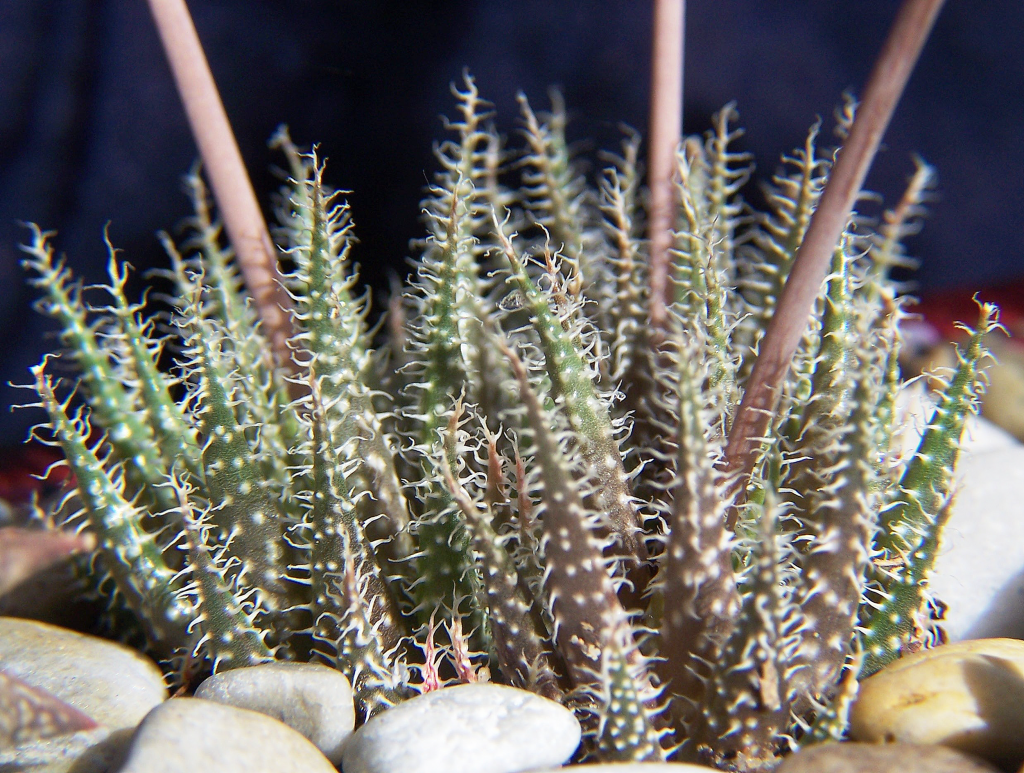Aloe haworthioides was described by Baker in 1887, moved to a unispecies genus Aloinella by Lemée in 1939 and then into Lemeea by Heath in 1993. This was wisely all undone by G. F Smith et al in 1995. This taxonomic dance is one of those events which probably bring taxonomy into disrepute in the minds of people otherwise respectful of scientific process.
Continue readingCategory Archives: Aloe
Leaf arrangement in Aloe striatula
Herewith is an image of the leaf arrangement in Aloe striatula. I have numbered the leaves in inverse order to show that the leaves are as much distichious as trifarious i.e in two rows or three. The primary set is 1 through 10, the distichous set is 1, 3, 5, 7, 9 and 2, 4, 6, 8, 10. The trifarious set is 1, 4, 7, 10; 2, 5, 8 and 3, 6, 9. I have also added a picture of the leaf insertion – here it is entire and there is a leaf sheath around the stem – the actual point of insertion is at the pointer although the “veins” continue through that point to the stem itself. In this species the next leaf is inserted just below the opening of the previous sheath. Despite the leaves being alternate, they are spirally arranged. In Aloe broomii the leaf insertion is continuous and you can peel all the leaves off the stem in one piece. In most Haworthias the leaves are imbricate (overlapping alternately) but always in a spiral sequence. H. wittebergensis has leaves that have entire insertion and by memory the same is true for H. blackburniae and maybe for H. viscosa.



